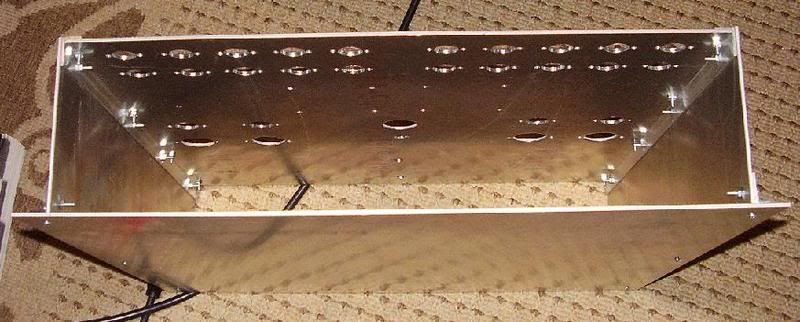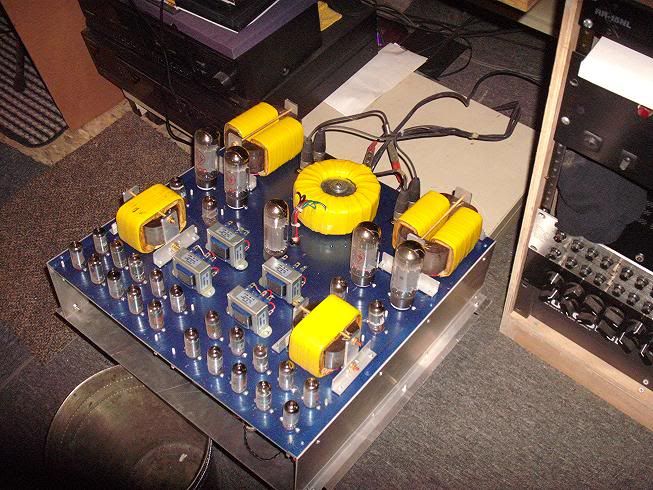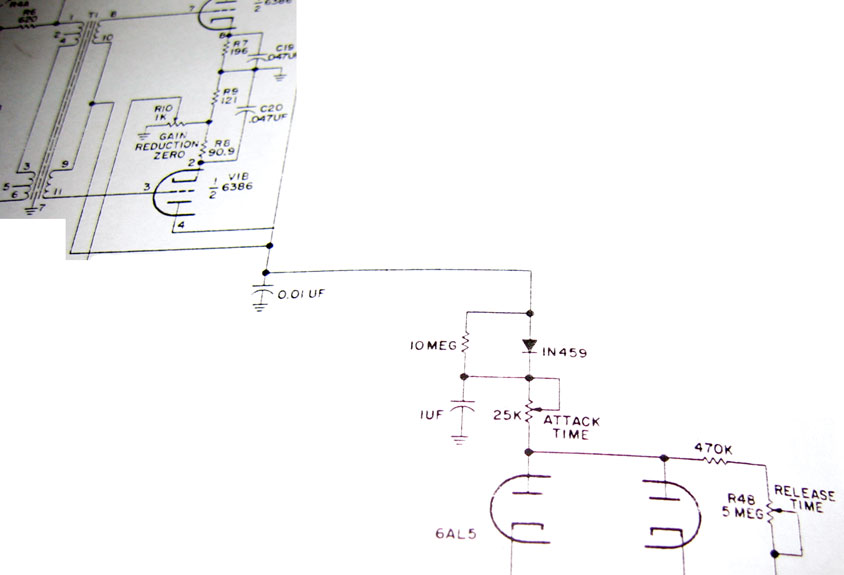There's been no mention of stereo linking method to date, and it's not on the PM schematic. The Fairchild simply ties the two control voltages together. Here's some food for thought.
Many limiters use diode isolation to ensure dual mono and stereo operation match in timing. The Fairchild fails to correct for this, for better or worse. As is, in the original design, if you toggle between linked and unlinked the time constants will change because of the nature of paralleling networks. We do not have the complexity of time constant switching found in the Fairchild, so it's not as if I'm suggesting we alter something that already mimics exact original operation. As far as I can tell, the only thing possibly changed by addition of diodes is the relatively minor need to overcome the diode voltage drop through additional drive on the threshold control.
NONE OF THIS HAS BEEN ATTEMPTED IN THE FIELD WITH A PM660!
Here's a comparison of the mono Collins 26U-1 with the stereo 26U-2 for example. This is not to be taken as a cookie-cutter drop-in, given the differences in design. The Collins being the more common type of side chain driven from a high impedance source with fairly high bias voltages present, and the PM660 being a side chain driven from a low impedance source with fairly low bias voltages present. The Collins manual describes the 1N459's as preventing feedback into the 1 mfd caps, to avoid increase in attack time from effective lowering of 1 mfd value.
The unattached connection from the 0.01 cap below runs to the link switch, then to the other identical side chain and audio channel.





































